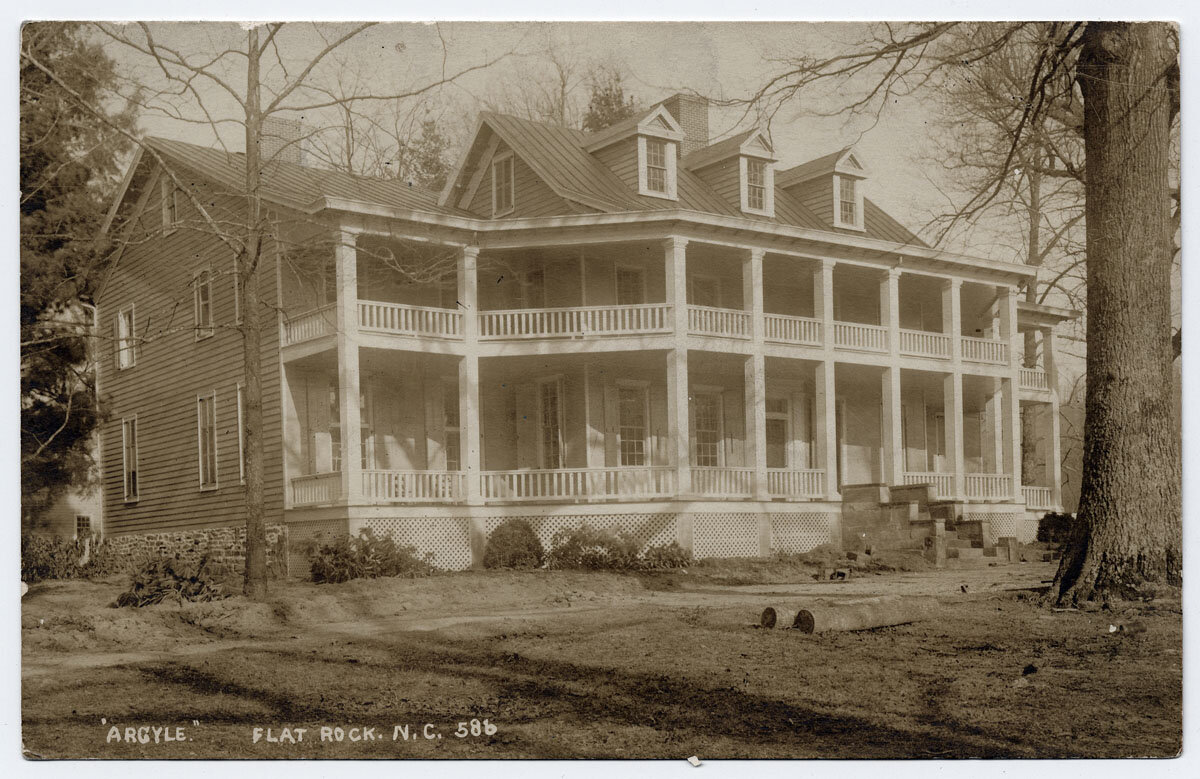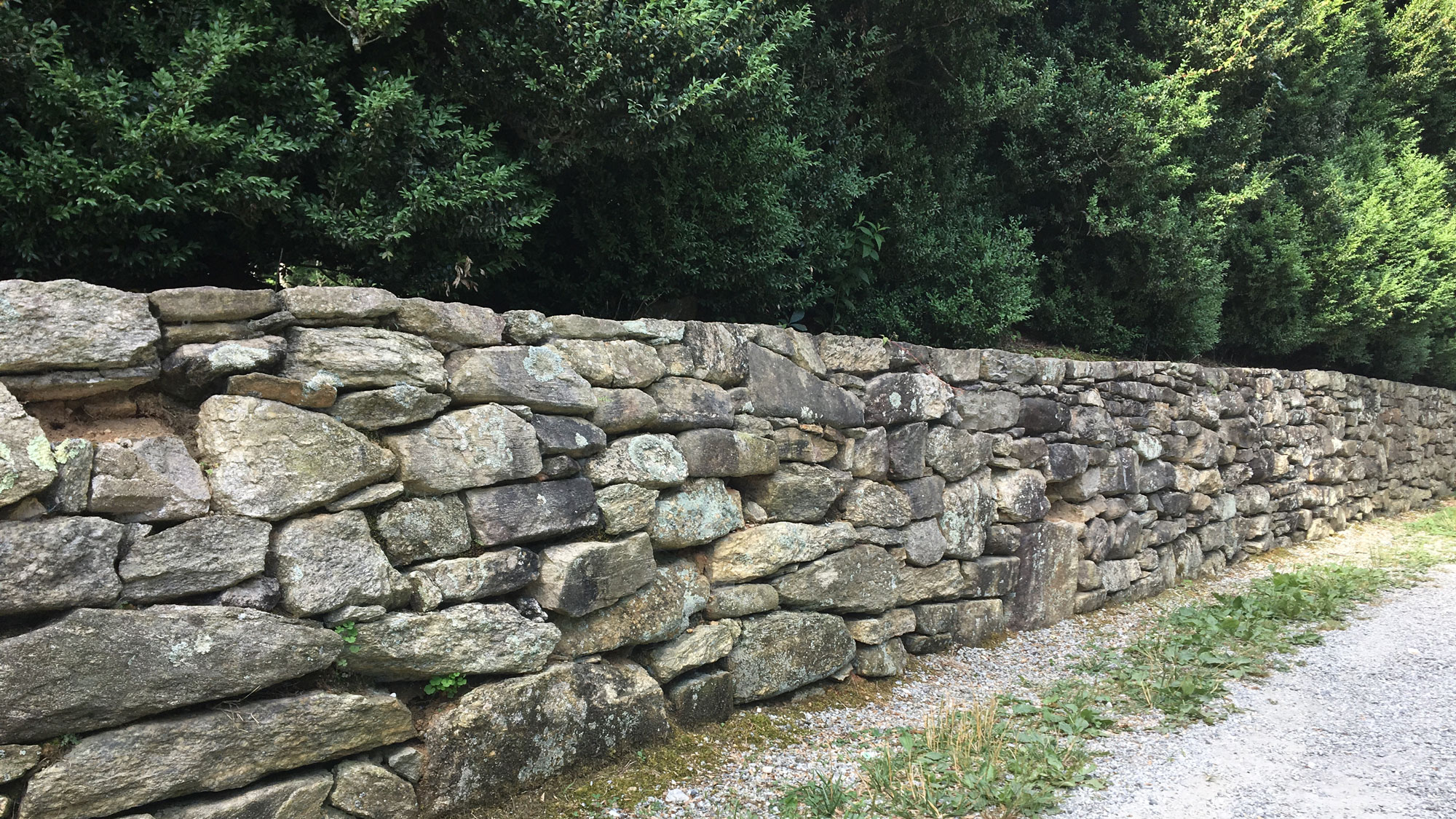Argyle
/UNC Libraries Commons: "Argyle" Flat Rock, N.C.Durwood Barbour Collection of North Carolina Postcards
By ALONG THE RIDGES
Louise Bailey
Posted Jan 25, 2004
One end of the porch has caved in. Parts of the roof were dragged down with it, and a landmark in local history has lost ground in its struggle to hold on. Argyle, built in 1830 as a summer home for Judge Mitchell King and his family, stands seriously threatened by the high cost of repair.
To some people, Argyle likely appears as just another spacious country house framed by giant oaks and hemlocks and a broad green meadow that reaches to the busy highway in front of it. Argyle has been more than that. It was one of the first two houses built in the pioneer settlement of Flat Rock by residents of the South Carolina lowcountry. Henderson County was not created until eight years later, the town of Hendersonville not until Judge King donated 50 acres for the county seat in 1841.
When Judge King purchased the property from John Davis it included, according to Davis, “the dwelling house in which I now reside, the offices, sawmills and all other dwellings and improvements.” King thereby acquired not only land and what is believed to be the core of the present Argyle house, but a lumber mill ready to produce planks from trees cut on the property and hauled by his own team of oxen. He ordered 80,000 locally made bricks for chimneys and the foundation of his house, though for the latter Charles Barnett, who supervised the construction work, chose to use granite quarried nearby, thinking the bricks would not withstand severe winter weather.
The house was designed with comfort, not elegance, in mind. Through windows reaching to the floor, summer breezes wafted through all of the rooms. In 1847 the house was enlarged by the addition of two-story matching wings, and at about the same time pointed arch lattice-work was built across the entire front porch. The lattice-work was removed in 1910 when the property came into the hands of Judge King’s grandson Alexander Campbell King, Solicitor General of the United States under Woodrow Wilson and later Associate Judge of the Fifth Court of Appeals. He added wooden columns and made other significant improvements, such as putting in electricity and indoor plumbing.
Behind the main house, Judge Mitchell King had built a room for his books that filled shelves extending from the floor to the ceiling. There he read without distraction, furthering the wealth of information he had acquired in spite of limited formal education. His grandson turned the “book room” into a cottage suitable for year-round living, but sadly, a few years ago the cottage burned beyond affordable repair and a chapter in Argyle’s history ended.
For a number of years now the grand old house has been admired by people passing by, but knowing little, if anything, of its past. Some, though, remember older generations telling of summers when families and friends from the lowcountry gathered at Argyle for respite from oppressive heat and malaria. Argyle’s gardens provided vegetables, the barnyard offered meat and dairy products, and often as many as 25 people were seated at the dinner table. There were hikes and horseback rides across the vast acreage of Argyle and Glenroy (now Kenmure), the home of Dr. Mitchell King, a son of the judge.
Picnics and tennis teas were held in the afternoons and charades and balls took place in the parlor on many summer evenings. Children slid down the sloping rock where King Creek passes underneath the Greenville Highway and they splashed in the ice-cold pool beyond the rock.
Well before the judge’s book room was turned into a cottage a family member spending summers at Argyle held classes for neighborhood children. For some it was the only education they received; for all of them, friendships continued between them and their teacher long after they were grown.
People passing the old house now see the once-stately structure giving in to the ravages of time. Some of them know it was once the heart of a community of closely-knit kinfolks and friends.




